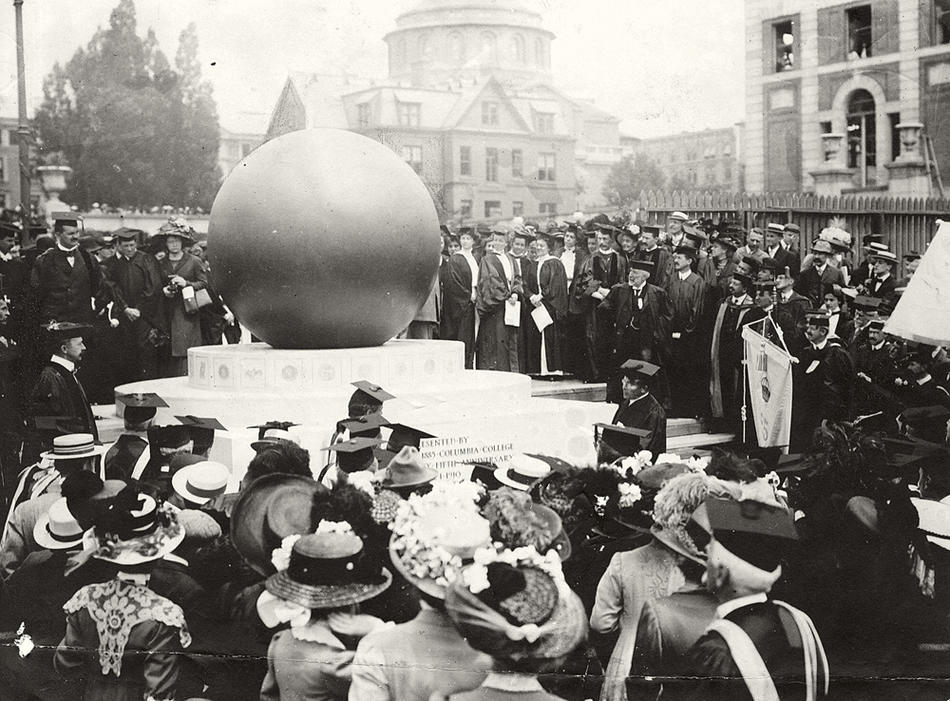Long ago, when automobiles putt-putted across College Walk and South Field’s turf was pocked by leather-helmeted footballers and javelin throwers, Columbia received a gift from the Class of 1885: a 16-ton green granite sphere placed upon a pedestal in the center of campus.
Erected in 1914, the Sundial’s ball (above) is one of many Columbia structures, small and large, to have vanished over the past 250 years. Some of this history can be seen in “Matilda Ate the Records: Finding Lost Columbia,” an exhibition of photographs and drawings from the University Archives on view at the Columbia Alumni Center through October.
Matilda was a goat whose owner, a squatter named Patrick Riley, lived in a shack on Amsterdam Avenue and 120th Street. In the years leading up to the Great War, Riley made Matilda available to Columbia students for pranks and hazing rituals that were probably not always enjoyable for man or beast. Matilda’s death in the eventful year of 1914 inspired a student-organized funeral procession, after which the creature was resurrected through the art of taxidermy and displayed for many years in the window of a local drugstore. A children’s book, Matilda the Goat, published in 1956 and on display, placed the nanny at the center of a Columbia football game (not to be confused with a hazing ritual), wherein she turns from goat to hero by using her horns.
Fortunately, Matilda, in her capacity as hungry browser, didn’t eat all of the records. Among the images spared are those of Low Rotunda as the main reading room; the flat, U-shaped University Hall (nicknamed “the Steamship” for its two mighty smokestacks); and the Victorian-Gothic gatekeeper’s cottage (a remnant of the old Bloomingdale Asylum), demolished in 1957 to make way for Ferris Booth Hall. And then there are the roads not taken: A color illustration shows a pair of 23-story towers rising from the east and west ends of South Field, dwarfing Butler Library, which lies between the giant bookends like a gilded volume of Herodotus on its side. Happily, architect I. M. Pei’s outsize plan was scrapped in 1970 for lack of funds. This was not the case for the old midtown campus (1857–1897, photographed from inside and out), which supplanted the Park Place campus (1760–1857), a long, brick-and-stucco building used as a barracks by both the British and the colonists during the Revolutionary War.
Things change, things fall apart. The old Gould Boathouse, a grand brick structure with a balcony and white columns located on the Hudson River at 115th Street, burned down in 1927. Two years earlier, further uptown, ground was broken on the Columbia-Presbyterian Medical Center, which was built on land once occupied by Hilltop Park, home of the New York Highlanders (as the Yankees were formerly known) and depicted in its billboard-filled heyday (Morisco Cigarettes, 15¢). Even the Sundial’s iconic orb, designed by McKim, Mead & White, gradually developed cracks, and was removed in 1946. Some say it still exists, perhaps in Ann Arbor, Michigan.
At least Matilda didn’t eat it.



